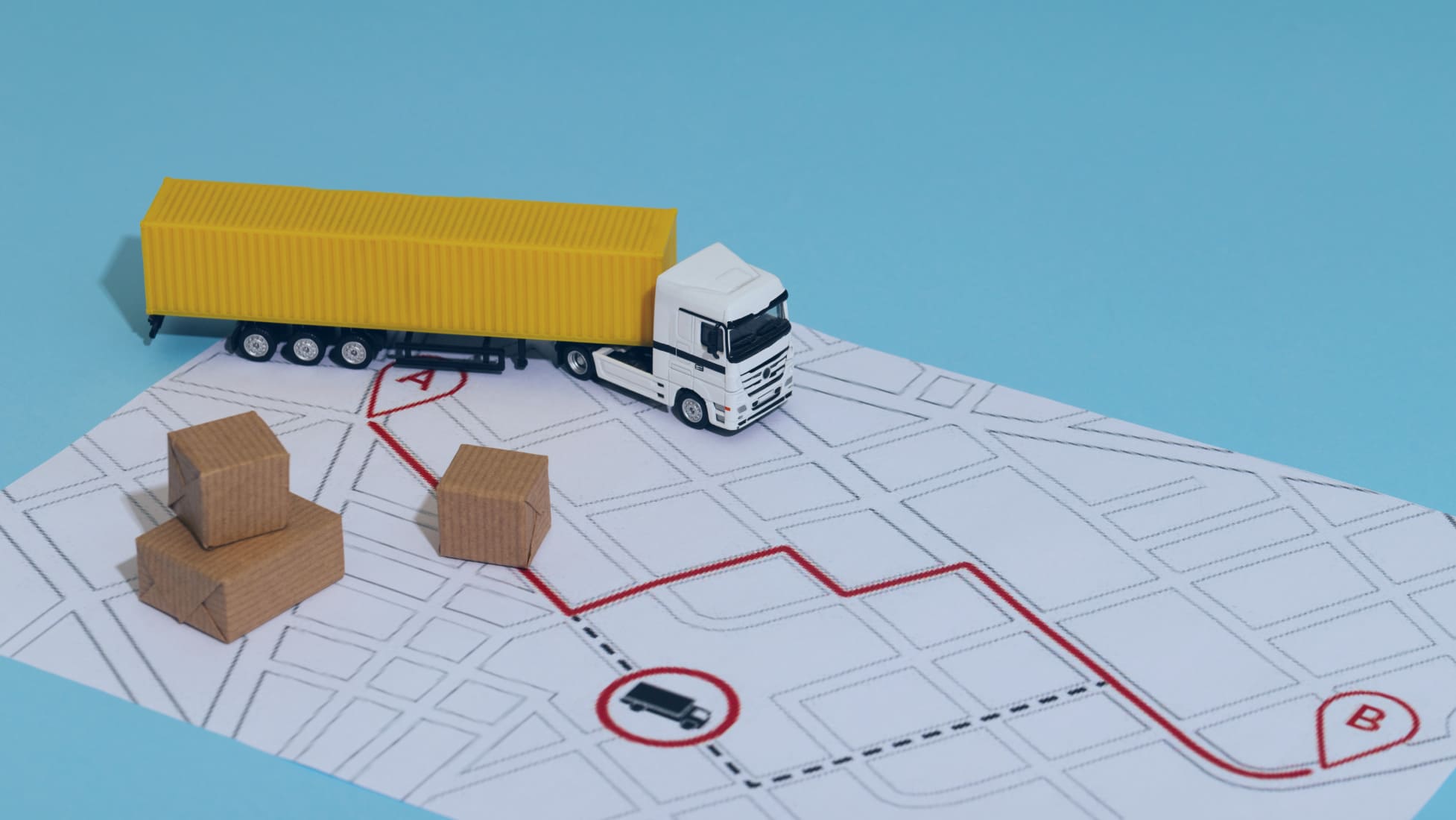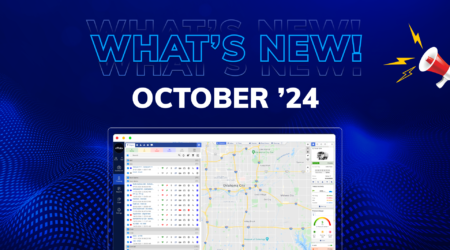Why Is Vehicle Asset Tracking Important?
In today’s fast-paced world, managing a fleet of vehicles goes beyond merely knowing their locations. Vehicle asset tracking has emerged as a cornerstone of modern logistics, safety, and fleet efficiency. It’s not just about tracking; it’s about leveraging data to make informed decisions, enhance operational efficiency, and secure assets. This blog dives into the importance of vehicle asset tracking and how it seamlessly integrates with advanced fleet management software, transforming the way businesses operate and manage their vehicle assets.
Understanding Vehicle Asset Tracking
Vehicle asset tracking is a system that utilizes GPS technology, sensors, and software to monitor and manage the location of vehicles in real time. This innovative technology offers more than just positional data; it provides insights into vehicle health, driver behavior, fuel usage, and much more. At its core, vehicle asset tracking aims to optimize resource utilization, ensuring that every vehicle and driver is fully optimized for the task at hand.
Technological Foundations of Vehicle Asset Tracking
Vehicle asset tracking is built on a combination of technologies that provide real-time data and insights into fleet operations. The core components include:
GPS Technology:
The backbone of any tracking system, GPS (Global Positioning System) technology, provides accurate location data for vehicles anywhere on the globe. This information is critical for real-time monitoring, route planning, and historical analysis of vehicle movements.
Telematics Devices:
Installed in vehicles, these devices collect and transmit data via cellular networks. They gather information on vehicle location, speed, engine status, fuel usage, and diagnostic codes, among others.
Sensors and IoT Devices:
Modern fleets are equipped with a variety of sensors that monitor everything from tire pressure to cargo temperature, enhancing the safety and efficiency of vehicle operations.
Cloud-Based Software:
The data collected by telematics devices and sensors is processed and stored in cloud-based fleet management software. This software provides an interface for fleet managers to view real-time data, generate reports, and make informed decisions.
Key Benefits of Vehicle Asset Tracking
Understanding the benefits of vehicle asset tracking requires looking at its impact on different aspects of fleet management:
Enhanced Fleet Visibility:
Knowing the precise location and status of every vehicle at any given time allows for better control and utilization of fleet assets.
Improved Safety and Compliance:
Tracking systems help enforce driving standards and compliance with regulations by monitoring driver behavior and vehicle operation.
Operational Efficiency and Productivity:
Data-driven insights enable optimization of routes, reduction of idle times, and better scheduling, leading to significant improvements in operational efficiency.
Cost Reduction:
By optimizing routes, improving vehicle maintenance, and reducing unauthorized vehicle use, businesses can achieve substantial cost savings.
Theft Prevention and Asset Recovery:
Real-time tracking capabilities deter theft and facilitate the quick recovery of stolen vehicles, minimizing potential losses.
Implementing Vehicle Asset Tracking
Implementing a vehicle asset tracking system involves several steps, tailored to meet the specific needs of a business:
Needs Assessment:
Begin by identifying the specific goals and requirements of your fleet. This might include improving driver safety, reducing fuel costs, enhancing customer service, or ensuring compliance with regulatory standards.
Choosing the Right Technology:
Select a vehicle asset tracking solution that fits your identified needs. Consider factors such as the scalability of the solution, the types of data it can collect and analyze, and its integration capabilities with other systems.
Installation and Integration:
Install telematics devices in your vehicles and integrate the tracking system with your existing fleet management software. This step may require technical support from your provider to ensure seamless integration.
Training and Adoption:
Train your staff and drivers on how to use the new system. Effective training ensures that everyone understands the benefits and knows how to utilize the data and features to improve fleet operations.
Data Analysis and Optimization:
Once the system is in place, analyze the data it provides to identify areas for improvement. Use insights gained from the tracking system to optimize routes, schedule preventive maintenance, and implement cost-saving measures.
Continuous Monitoring and Adjustment:
Vehicle asset tracking is not a set-and-forget solution. Continuous monitoring allows for ongoing adjustments and improvements, ensuring that the fleet remains efficient, safe, and cost-effective.
The Importance of Vehicle Asset Tracking
Safety and Security
One of the paramount benefits of vehicle asset tracking is the enhancement of safety and security. By monitoring vehicle locations and driver behaviors, companies can ensure adherence to safety protocols, reduce the risk of accidents, and swiftly respond to any emergencies. Moreover, in the unfortunate event of theft, real-time tracking enables quick recovery actions, significantly increasing the chances of retrieving stolen assets.
Operational Efficiency
Operational efficiency is at the heart of vehicle asset tracking. With precise data on vehicle locations and conditions, businesses can optimize routes, reduce idle times, and ensure timely deliveries. This not only saves fuel but also maximizes the utilization of each asset, contributing to a more efficient and productive fleet.
Cost Reduction
The financial implications of vehicle asset tracking are significant. By monitoring vehicle health and usage, companies can proactively manage maintenance, preventing costly breakdowns and extending vehicle lifespans. Additionally, many insurance companies offer reduced premiums for fleets equipped with tracking systems, recognizing the lower risk profile that comes with enhanced monitoring and management capabilities.
Compliance and Reporting
Vehicle asset tracking simplifies compliance with regulatory requirements by providing accurate logs of driver hours, routes taken, and maintenance records. This not only ensures that fleets operate within legal frameworks but also streamlines reporting processes, saving time and reducing the risk of non-compliance penalties.
Theft Recovery
In instances of theft, vehicle asset tracking systems are invaluable. They provide real-time location data, enabling law enforcement to recover stolen vehicles quickly. This not only protects against asset loss but also deters potential thieves, knowing that the vehicles are closely monitored.
Trends in Vehicle Asset Tracking
The landscape of vehicle asset tracking is constantly evolving, with new technologies and trends shaping its future. From the integration of IoT devices and telematics to the adoption of AI and machine learning for predictive analytics, the possibilities are endless.
The evolution of vehicle asset tracking is closely tied to advancements in technology. Here’s a closer look at the cutting-edge innovations shaping the future of fleet management:
5G Connectivity:
The rollout of 5G networks promises to revolutionize vehicle asset tracking with faster, more reliable data transmission. This enables real-time tracking and communication, even in remote areas, enhancing fleet management’s efficiency and responsiveness.
Machine Learning and AI:
Artificial Intelligence (AI) and Machine Learning (ML) are being integrated into vehicle tracking systems to analyze vast amounts of data for predictive analytics, maintenance forecasts, and to optimize routes dynamically based on traffic patterns, weather conditions, and other variables.
Blockchain Technology:
Blockchain offers a secure and transparent way to log and share data within the logistics chain. This can improve trust and collaboration between stakeholders, ensure the integrity of tracking data, and streamline operations by reducing paperwork and administrative overhead.
Internet of Things (IoT) Ecosystems:
The expansion of IoT in vehicle tracking integrates vehicles into a broader network of connected devices. This ecosystem approach allows for comprehensive monitoring and management of all aspects of fleet operations, from vehicle health to cargo conditions.
Strategic Integration into Fleet Management
Integrating vehicle asset tracking into fleet management involves strategic planning and execution. Here’s how businesses can harness the full potential of this technology:
Customized Solution Development:
Tailoring the tracking system to fit the unique requirements of a fleet, considering factors like vehicle types, operational goals, and specific challenges.
Data-Driven Decision Making:
Leveraging the insights provided by tracking data to make informed decisions on fleet deployment, maintenance scheduling, and driver management.
Enhancing Driver Engagement:
Using tracking data to engage with drivers constructively, providing feedback on driving habits, and encouraging participation in safety and efficiency programs.
Integrating with Other Business Systems:
Linking the tracking system with other business software (e.g., ERP, CRM) for a unified operational view, improving efficiency across all departments.
Broader Implications for Businesses
Vehicle asset tracking has far-reaching implications for businesses across various industries, not just those with traditional fleets:
Supply Chain Optimization:
In logistics and supply chain management, vehicle tracking ensures timely deliveries, optimizes inventory levels, and enhances supplier and customer relationships.
Environmental Sustainability:
By optimizing routes and reducing idle times, businesses can lower their carbon footprint, contributing to environmental sustainability efforts.
Enhanced Customer Experience:
Real-time tracking information can be shared with customers, providing transparency and improving service levels through accurate delivery times and proactive communication.
Competitive Advantage:
Businesses that adopt advanced vehicle tracking solutions can gain a competitive edge by operating more efficiently, reducing costs, and offering superior service.
Future Outlook
The future of vehicle asset tracking is poised for continued innovation, with emerging technologies further enhancing the capabilities and applications of tracking systems. As businesses increasingly recognize the value of data-driven fleet management, the adoption of advanced tracking solutions will become a critical component of strategic operations. This evolution not only promises to improve the efficiency and profitability of fleets but also to transform the way businesses approach logistics, customer service, and environmental responsibility.
Choosing the Right Vehicle Asset Tracking Solution
Selecting the right vehicle asset tracking solution is crucial. Look for systems that offer real-time tracking, comprehensive reporting, and customizable alerts. It’s also important to choose a solution that integrates seamlessly with your existing operations and scales with your business. Our advanced fleet management software offers these features and more, providing a robust platform for optimizing your fleet operations.
Conclusion
Vehicle asset tracking is no longer a luxury but a necessity in today’s complex and competitive business environment. It offers myriad benefits, from enhancing safety and security to boosting operational efficiency and reducing costs. By embracing advanced fleet management software, businesses can ensure they stay ahead of the curve, optimizing their fleet operations for maximum efficiency and profitability. Embrace the future of fleet management today and unlock the full potential of your vehicle assets.





